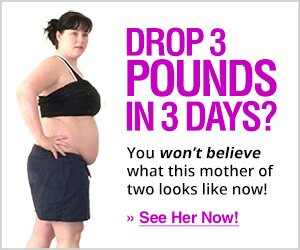Volumetrics Eating: A Non-Diet(ish) Approach to Weight-Loss

If restrictive, calorie counting diets aren’t your thing, there’s a way of eating you may want to explore. Instead of consuming less food when weight loss is the goal, you eat more. The Volumetrics Diet is centered around a fairly simple way of eating: filling up on fewer calories with foods that are high in nutrients, and without the task of counting calories and measuring food. Sounds pretty easy, right?
Consistently ranked as one of the best weight-loss plans available, the Volumetrics diet was tied at No. 2 for best weight-loss “diets” in 2020 by the US News and World Report’s Best Weight-Loss Diet, and also ranked number 5, out of 35 diets, in 2020 via the US News and Report’s Best Weight-loss ranking.
Although it’s not a new diet, so-to-speak, the benefits of Volumetrics keep making headwaves — and for good reason.
So, if you’re looking to put your measuring tools away and calorie counting to rest, Volumetrics might be for you!
What is the Volumetrics Diet? (Basic breakdown, rules, foods)
The Volumetrics Diet was created by Barbara Rolls, Ph.D., professor, and chair of Nutritional Sciences at Penn State University, where she heads the laboratory for the study of human ingestive behavior.
Differing from many other diets, the Volumetrics Diet is all about caloric density. “The idea is to be able to eat a larger volume of food, allowing you to feel full, while still promoting weight loss,” explains Missouri-based dietitian Jacob Klessens, LD, CPT.
This is achieved by shifting your focus to eating foods that are nutrient-dense, but not calorically dense. Klessens explains how this is done: “To determine the caloric density of foods, you will need to divide the number of calories in the serving by the weight of the serving in grams,” he says. For example, there are about 34 calories in 100g of broccoli, making the caloric density 0.34 (34 cals/100g = 0.34). Once you get the hang of how to navigate these steps, the rest is pretty easy.
How Volumetrics Works: The 4 Food Categories
The Volumetrics Diet is broken down into 4 categories:
- Category 1: Very low-calorie density foods (less than 0.6) This includes fruits, non-starchy veggies, and broth-based soups.
- Category 2: Low-calorie density foods (0.6-1.5). This includes whole grains, lean meats, beans, low-fat dairy.
- Category 3: Medium-calorie density foods (1.6-3.9). This includes bread, some desserts, cheese, higher fat foods.
- Category 4: High-calorie density foods (4.0-9.0). This includes fried/fatty foods and sweets.
Note that the Volumetrics Diet plan encourages you to build your meals containing mainly Category 1 foods, some Category 2, few Category 3 foods, and occasionally Category 4 foods. The good thing about the food selection is you are able to enjoy treats, such as desserts, but in moderation.
More volume for sustainable weight-loss
Higher-volume foods equal higher weight-loss success, both short and long term, by sustainably reducing one’s caloric intake; healthily.
“If you shift your focus to eating whole, nutrient-dense foods that are low calorie, you can “eat more for less,” says Klessens. And lower-calorie doesn’t mean you will be feeling hungry all day due to the satiety that comes with consuming higher-volume foods.
“A common issue that people come across when dieting is that they are always hungry, to an extent, that is unavoidable,” he adds. This is where the cycle of yo-yo dieting can rear its ugly head.
If you can help increase satiety by eating larger amounts of foods high in water, fiber, and lean protein, that will make the process much easier. “When it comes to weight loss, fiber and protein are your friends,” recommends Klessens. Not only are they good for you, but they both also take longer to digest compared to eating simple carbohydrates. “This longer digestion process will help keep you feeling fuller longer,” Klessens says, which is why eating for volume, can allow you to lose weight, and keep it off.
The Downsides of Volumetrics Eating: Is it right for you?
Although Volumetrics promotes a more balanced way of eating by encouraging fruits, veggies lean meats, and whole grains, Klessens feels it may be lacking an important macronutrient: fats.
“Fats are responsible for many vital roles in our bodies such as being an energy source, hormone production, and aiding in nutrient absorption,” says Klessens. With the volumetrics diet, the majority of fats are listed in Category 4, which are only to be eaten on occasion. “I agree that we should reduce our intake of foods high in saturated fat (sweets, fatty meats, butter, some oils), but there are many health benefits to eating foods high in unsaturated fats such as nuts/seeds, fatty fish, and some cooking oils (olive, avocado, and canola just to name a few),” he adds.
The good news is, you can add in good fats if you desire and still achieve weight loss by maintaining an active lifestyle and focusing on clean, whole foods with the bulk of your foods being more volumetrics based. Just don’t go overboard and you’ll be fine.
Another issue that Klessens sees as a potential downside is the possibility of becoming too focused on calculating the density of foods, and in turn, that might become more restrictive. “Just like with any other “diet”, there will be people that take it to the extreme and could potentially end up doing more harm than good.” After- all, the last thing we want is for people to become overly obsessive with looking at those caloric density numbers. “The goal here is for people to learn to create well-balanced meals and follow a maintainable eating pattern,” adds Klessens.
Food for thought for those who tend to get overwhelmed with counting calories on previous diets; Volumetrics might not be for you, and that’s OK!
Like any other nutrition regimen, you need to do what works best for you, and that might mean trying different “diets” until you discover one that works best for your body and lifestyle. The easier to maintain, the better.







